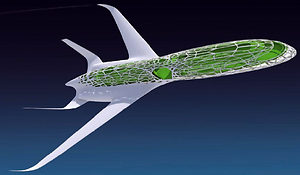Analysis of the applicability of the bionic
structures in optimizing transportation weight
1
University of Technology and Life Sciences in Bydgoszcz
Data publikacji: 02-06-2014
Rail Vehicles/Pojazdy Szynowe 2014,2,39-43
STRESZCZENIE
Transportation is equipment which absorbs energy. In the era of the energy
rising prices one seeks solutions that can result in savings due to reduced
energy consumption. The world of science and industry is continuously looking
for savings in this area. In simple logic, we can talk about savings when there is
a reduction in kerb weight of driven object. This paper presents an optimization
method that can be used to reduce the weight of vehicles. Mass optimization is a
process that has to be conducted on basing on the assumed criteria and, as in
the case described here, the normative requirements. Presented process begins
with the definition of the area to be analysed and then decomposition and
selecting the typical construction nodes after that continues to picking library
solutions based on which, the selection algorithm is built. User calls back the
criteria and selects it interesting solution: the extreme: a light and expensive,
heavy and cheap or many other combinations. The study aimed to achieve the
effect of optimization based on computational methods in the final stage of the
experimental verification, depending on the case.
REFERENCJE (5)
1.
Wuggetzer, I., Airbus Concept Cabin 2050 – A Flying Experience Inspired by Nature, Airbus, Transportation Weight Loss Diet Conference, Stuttgart 2013.
2.
Kranz, J., Emmelmann, C., Lightweight design and laser additive manufacturing: exploiting new potentials, ILAS, Transportation Weight Loss Diet Conference, Stuttgart 2013.
3.
Stassin, S., Design Desire, Kiska, Transportation Weight Loss Diet Conference, Stuttgart 2013.
4.
PN-EN 12663-1:2010E – Kolejnictwo - Wymagania konstrukcyjno-wytrzymałościowe dotyczące pudeł kolejowych pojazdów szynowych - Część 1: Lokomotywy i tabor pasażerski (i metoda alternatywna dla wagonów towarowych).
Udostępnij
Przetwarzamy dane osobowe zbierane podczas odwiedzania serwisu. Realizacja funkcji pozyskiwania informacji o użytkownikach i ich zachowaniu odbywa się poprzez dobrowolnie wprowadzone w formularzach informacje oraz zapisywanie w urządzeniach końcowych plików cookies (tzw. ciasteczka). Dane, w tym pliki cookies, wykorzystywane są w celu realizacji usług, zapewnienia wygodnego korzystania ze strony oraz w celu monitorowania ruchu zgodnie z Polityką prywatności. Dane są także zbierane i przetwarzane przez narzędzie Google Analytics (więcej).
Możesz zmienić ustawienia cookies w swojej przeglądarce. Ograniczenie stosowania plików cookies w konfiguracji przeglądarki może wpłynąć na niektóre funkcjonalności dostępne na stronie.
Możesz zmienić ustawienia cookies w swojej przeglądarce. Ograniczenie stosowania plików cookies w konfiguracji przeglądarki może wpłynąć na niektóre funkcjonalności dostępne na stronie.



